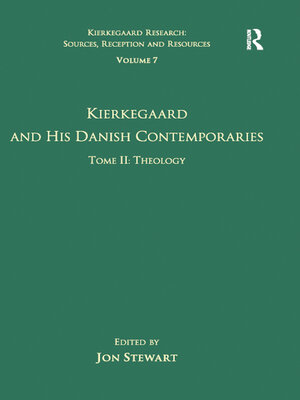Volume 7, Tome II
ebook ∣ Kierkegaard and His Danish Contemporaries--Theology · Kierkegaard Research: Sources, Reception and Resources
By Jon Stewart

Sign up to save your library
With an OverDrive account, you can save your favorite libraries for at-a-glance information about availability. Find out more about OverDrive accounts.
Find this title in Libby, the library reading app by OverDrive.



Search for a digital library with this title
Title found at these libraries:
| Library Name | Distance |
|---|---|
| Loading... |
The period of Kierkegaard's life corresponds to Denmark's "Golden Age," which is conventionally used to refer to the period covering roughly the first half of the nineteenth century, when Denmark's most important writers, philosophers, theologians, poets, actors and artists flourished. Kierkegaard was often in dialogue with his fellow Danes on key issues of the day. His authorship would be unthinkable without reference to the Danish State Church, the Royal Theater, the University of Copenhagen or the various Danish newspapers and journals, such as The Corsair, Fædrelandet, and Kjøbenhavns flyvende Post, which played an undeniable role in shaping his development. The present volume features articles that employ source-work research in order to explore the individual Danish sources of Kierkegaard's thought. The volume is divided into three tomes in order to cover the different fields of influence. Tome II is dedicated to the host of Danish theologians who played a greater or lesser role in shaping Kierkegaard's thought. In his day there were a number of competing theological trends both within the church and at the Faculty of Theology at the University of Copenhagen, and not least of all in the blossoming free church movements. These included rationalism, Grundtvigianism and Hegelianism. In this quite dynamic period in Danish ecclesial history, Kierkegaard was also exercised by a number of leading personalities in the church as they attempted to come to terms with key issues such as baptism, civil marriage, the revision of the traditional psalm book, and the relation of church and state.







